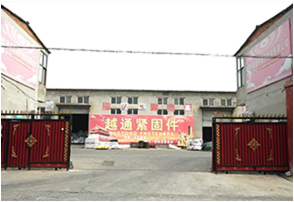Lis . 09, 2024 00:22 Back to list
316 Stainless Steel All Thread Rods for Durable and Versatile Applications
Understanding 316 Stainless Steel All Thread Rod Characteristics, Uses, and Advantages
316 stainless steel all thread rod is an essential component in various construction and industrial applications. Known for its excellent corrosion resistance and mechanical properties, this type of rod is widely utilized in environments that are particularly challenging due to the presence of moisture, chemicals, and extreme temperatures.
What Is 316 Stainless Steel?
316 stainless steel is an austenitic alloy that contains molybdenum, which enhances its resistance to pitting and crevice corrosion in chloride environments. This alloy is primarily composed of iron, with 16% chromium, 10% nickel, and 2% molybdenum. The chemical composition of 316 stainless steel makes it more resistant to corrosion compared to its counterpart, 304 stainless steel. This makes 316 stainless steel particularly popular in marine applications, as well as in chemical processing industries.
Characteristics of 316 Stainless Steel All Thread Rod
One of the standout features of 316 stainless steel all thread rods is their exceptional strength and durability. These rods are created with high tensile strength, which allows them to withstand significant loads and stresses. The all thread construction means that the rod is fully threaded along its entire length, allowing for flexible applications in fastening and anchoring.
In addition to their strength, 316 stainless steel all thread rods exhibit outstanding resistance to rust and corrosion—properties that are crucial in environments exposed to water and corrosive substances. Their ability to perform under extreme temperatures, both hot and cold, further enhances their versatility.
Common Applications
316 stainless steel all thread rods are used in various applications across multiple industries. Some of the common uses include
1. Marine Construction In boat building and docks, 316 stainless steel is preferred due to its ability to resist the harsh marine environment.
316 stainless steel all thread rod

3. Food Processing The food industry prioritizes materials that are both strong and resistant to rust. 316 stainless steel rods are commonly found in manufacturing plants requiring high standards of hygiene.
4. Architectural Applications These rods are also used in tensioning systems, support structures, and as fasteners in various architectural projects, where both aesthetics and structural integrity are critical.
Advantages of Using 316 Stainless Steel All Thread Rods
The use of 316 stainless steel all thread rods comes with several advantages
1. Corrosion Resistance As previously mentioned, their ability to resist rust makes them ideal for outdoor and underwater applications.
2. Strength This material offers superior tensile strength compared to many other metals, ensuring that structures remain secure under load.
3. Longevity Due to their durability and resistance to wear, 316 stainless steel all thread rods generally have a long service life. This results in lower maintenance costs and fewer replacements over time.
4. Versatility With applications across various fields, these rods can effectively meet diverse engineering and construction needs.
5. Hygienic Properties Their non-porous surface makes them ideal for environments where sanitation is critical.
Conclusion
In summary, 316 stainless steel all thread rods are invaluable tools in today's engineering and construction landscape. Their robust properties, resistance to corrosion, and flexibility in applications make them a preferred choice in a variety of demanding environments. Whether in marine, chemical, food processing, or architectural sectors, the durability and reliability of these rods serve to uphold safety, efficiency, and longevity in structural integrity. As industries continue to seek materials that offer both performance and longevity, 316 stainless steel all thread rods will remain a staple, demonstrating their enduring value and application across numerous fields.
-
sleeve-anchor-innovations-that-hebei-yuetong-fasteners-engineering-excellence
NewsAug.22,2025
-
screw-s-precision-engineering-for-global-industries
NewsAug.22,2025
-
hexagon-nut-that-high-quality-fasteners-from-hebei-yuetong
NewsAug.22,2025
-
clamp-that-high-quality-fastening-solutions-from-hebei-yuetong
NewsAug.22,2025
-
bolt-that-reliable-fasteners-from-hebei-yuetong
NewsAug.22,2025
-
anchor-bolt-that-premium-fasteners-for-secure-and-durable-installations
NewsAug.22,2025


